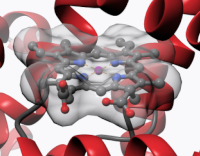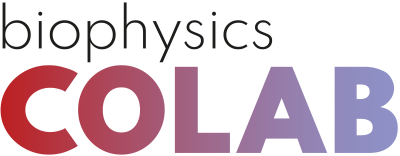Biophysics Colab
Biophysics Colab is a collaboration of biophysicists who are working in partnership with eLife to improve the way in which original research is evaluated. We aim to drive forward the principles of open science by providing an equitable, inclusive, and transparent environment for peer review. Our ambition is to facilitate a publishing ecosystem in which the significance of research is recognised independently of publication venue.
Featured lists
-
Reading List
Articles that are being read by Biophysics Colab.
Curated by Biophysics Colab

-
Curated Preprints
Articles that have been curated by Biophysics Colab.
Curated by Biophysics Colab
Latest preprint reviews
-
Structural insights into the organization and channel properties of human Pannexin isoforms 1 and 3
This article has 8 authors:Reviewed by Biophysics Colab
-
Dynamic allosteric networks drive adenosine A1 receptor activation and G-protein coupling
This article has 2 authors:This article has been curated by 2 groups:Reviewed by eLife, Biophysics Colab
-
Intracellular Helix-Loop-Helix Domain Modulates Inactivation Kinetics of Mammalian TRPV5 and TRPV6 Channels
This article has 5 authors:This article has been curated by 1 group:Reviewed by Biophysics Colab
-
Structures and membrane interactions of native serotonin transporter in complexes with psychostimulants
This article has 4 authors:This article has been curated by 1 group:Reviewed by Biophysics Colab
-
Tuning aromatic contributions by site-specific encoding of fluorinated phenylalanine residues in bacterial and mammalian cells
This article has 12 authors:This article has been curated by 1 group:Reviewed by Biophysics Colab
-
Interpreting the molecular mechanisms of disease variants in human transmembrane proteins
This article has 4 authors:Reviewed by Biophysics Colab
-
Activation-pathway transitions in human voltage-gated proton channels revealed by a non-canonical fluorescent amino acid
This article has 4 authors:This article has been curated by 1 group:Reviewed by Biophysics Colab
-
Integrated AlphaFold2 and DEER investigation of the conformational dynamics of a pH-dependent APC antiporter
This article has 6 authors:Reviewed by Biophysics Colab
-
Activation mechanism of the human Smoothened receptor
This article has 3 authors:This article has been curated by 1 group:Reviewed by Biophysics Colab
-
Membrane curvature governs the distribution of Piezo1 in live cells
This article has 12 authors:This article has been curated by 1 group:Reviewed by Biophysics Colab
